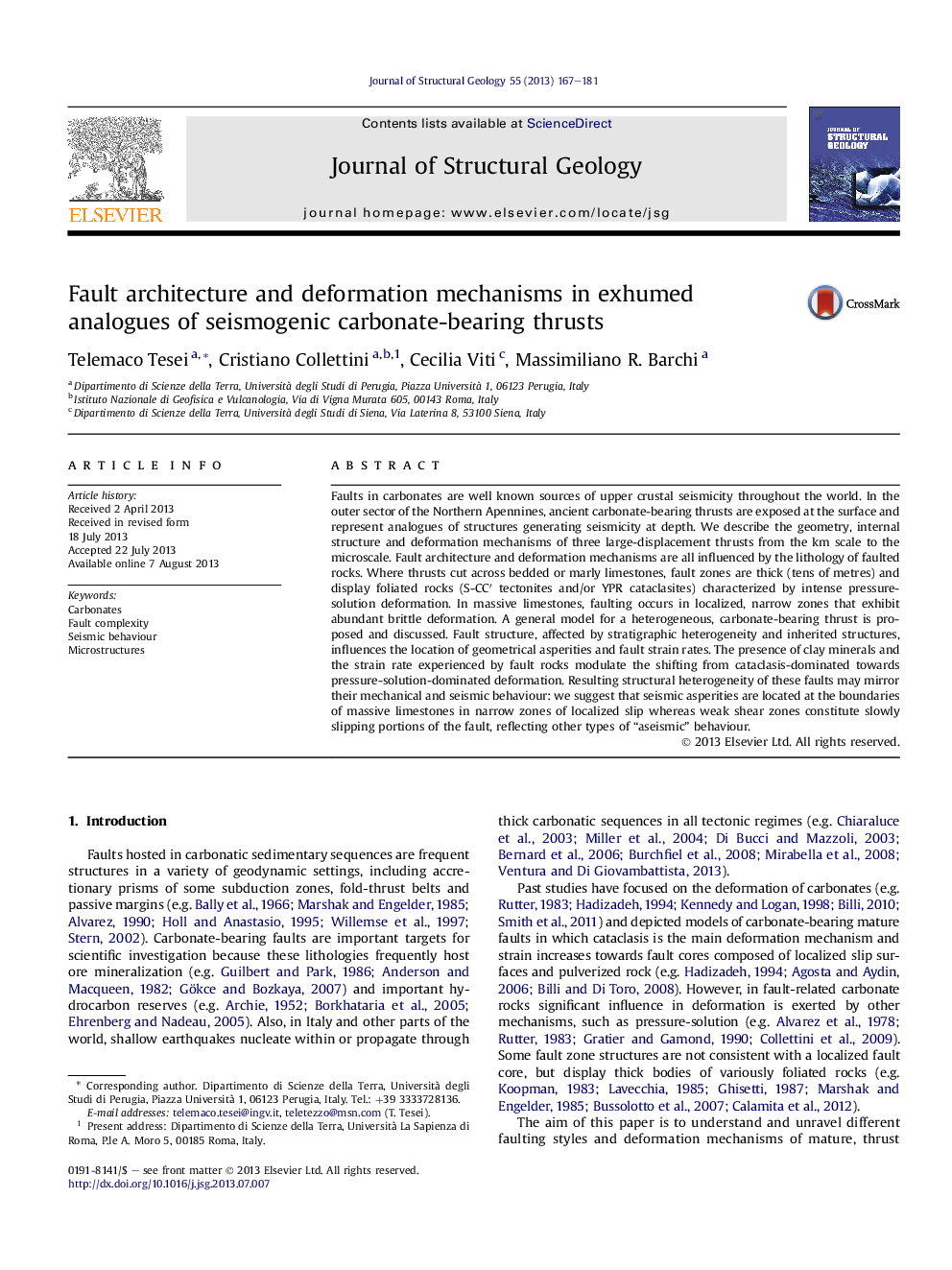| کد مقاله | کد نشریه | سال انتشار | مقاله انگلیسی | نسخه تمام متن |
|---|---|---|---|---|
| 4733179 | 1640522 | 2013 | 15 صفحه PDF | دانلود رایگان |

• We describe structural geology and microstructures of three exhumed seismogenic thrusts hosted in carbonates.
• Different strain rates and clay fraction induce either brittle or ductile faulting and mechanical heterogeneities.
• Seismic-prone and slow slipping fault patches may coexist within the same fault at the same depth.
Faults in carbonates are well known sources of upper crustal seismicity throughout the world. In the outer sector of the Northern Apennines, ancient carbonate-bearing thrusts are exposed at the surface and represent analogues of structures generating seismicity at depth. We describe the geometry, internal structure and deformation mechanisms of three large-displacement thrusts from the km scale to the microscale. Fault architecture and deformation mechanisms are all influenced by the lithology of faulted rocks. Where thrusts cut across bedded or marly limestones, fault zones are thick (tens of metres) and display foliated rocks (S-CC′ tectonites and/or YPR cataclasites) characterized by intense pressure-solution deformation. In massive limestones, faulting occurs in localized, narrow zones that exhibit abundant brittle deformation. A general model for a heterogeneous, carbonate-bearing thrust is proposed and discussed. Fault structure, affected by stratigraphic heterogeneity and inherited structures, influences the location of geometrical asperities and fault strain rates. The presence of clay minerals and the strain rate experienced by fault rocks modulate the shifting from cataclasis-dominated towards pressure-solution-dominated deformation. Resulting structural heterogeneity of these faults may mirror their mechanical and seismic behaviour: we suggest that seismic asperities are located at the boundaries of massive limestones in narrow zones of localized slip whereas weak shear zones constitute slowly slipping portions of the fault, reflecting other types of “aseismic” behaviour.
Journal: Journal of Structural Geology - Volume 55, October 2013, Pages 167–181